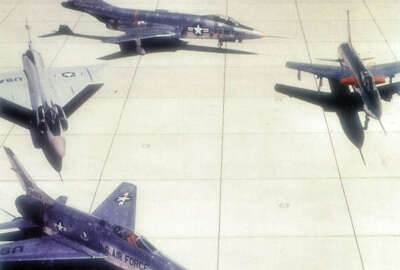
More sensors, more digital infrastructure in Air Force ISR plan
The Air Force is updating its strategy for intelligence, surveillance and reconnaissance to include more sensors and more digital infrastructure.
The Air Force has a new plan to upgrade its intelligence, surveillance and reconnaissance (ISR) capabilities in order to maintain the leading edge in contested environments. Although it’s still in a draft stage, officials say it focuses on upgrades to a key data digital integration plan.
As the Air Force and Space Force harvest data from increasing numbers of sensors, they require more ISR digital infrastructure to process the data and get it into the hands of battlefield decision makers.
Expanding the digital infrastructure has been on the department’s wish list since it published its 2018 Next Generation ISR Dominance Flight Plan, but it never had the funding to move forward.
Lt. Gen. Leah Lauderback, the Air Force’s deputy chief of staff for ISR and cyber effects operations, said the service now has the money to develop its ISR digital infrastructure architecture.
“A few years ago, we had thought about this and it was in that next generation flight plan, but we were unable to really ever get the resources, the funding, to start to architect that out,” said Lauderback during a Mitchell Institute webinar Wednesday. “I am happy to say that we’ve gotten some money to do that now. We will be moving out on that very shortly.”
In addition to the infrastructure, the Air Force also needs to expand the data gathering in its ISR program, Lauderback said. When the service published its Future Operating Concept in March, it listed six areas of concentration, all of which included intelligence gathering. Lauderback said intelligence depends on expanding the all-domain sensing grid, which has four layers including the sensors, the digital infrastructure, the orchestration of the data and the human element.
While the sensors traditionally come from the airborne layer, she said they also need to come from space, the Army, the Navy and sensors traditionally used for other purposes.
She also stressed the need for data gathering at different security levels and from commercial sources.
“If it’s good for intelligence, then we’ll turn that into intelligence. If it’s good for battlespace awareness, then we can use that for battlespace awareness or for targeting or whatever it might be. But I see those sensors as not just what we provide from an airborne layer,” said Lauderback.
With the ability to gather and process data, the third part of the grid involves making different elements of the program work together.
“I call it orchestration. Somebody does need to do the command and control of all the sensors out there. I just want to be able to have all of those sensors, the right phenomenology, looking at the right targets at the right time,” she said.
The final element in reimagining the Air Force plan for ISR involves personnel. The decision making, command and control aspect requires collaboration throughout intelligence communities. Lauderback said during her career in the Air Force she has seen a time where the problem was collecting enough data. Now, the volume of data has increased so much it is hard to process. To keep up, operators need sense making tools that have the “triple A” capabilities of augmentation, artificial intelligence and automation.
“We’re moving into a place where we’ve got so much data, we can’t sift through all of it. And it will be only ever increasing through the end of this decade with the sensors that will go up,” said Lauderback. “Those triple A tools that we can arm our airmen with then will be able to sift through all of that data.”
Copyright © 2025 Federal News Network. All rights reserved. This website is not intended for users located within the European Economic Area.
Alexandra Lohr, a former staff member, covered the Defense Department for Federal News Network until September 2023.
Related Stories





